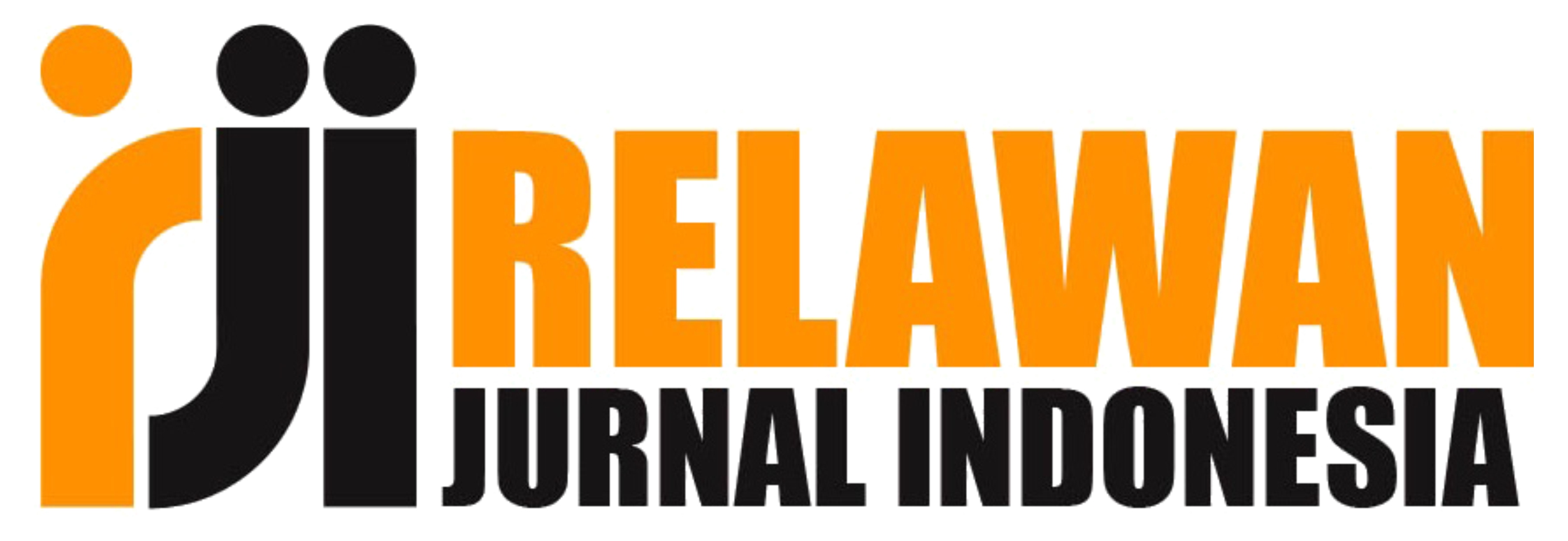The Impact of Organizational Citizenship Behavior, Employee Engagement, and Managerial Decision-Making on the Microfinance Institutions Performance
Abstract
Keywords
Full Text:
PDFReferences
Albrecht, S., Breidahl, E., & Marty, A. (2018). Organizational resources, organizational engagement climate, and employee engagement. Career Development International, 23(1), 67–85. https://doi.org/10.1108/CDI-04-2017-0064/FULL/PDF
Al-Tarawneh, H. A. (2012). The Main Factors beyond Decision Making. Journal of Management Research, 4(1), 18. https://doi.org/10.5296/JMR.V4I1.1184
Andrade, T. de, Estivalete, V. de F. B., & Costa, V. F. (2018). Comportamento de cidadania organizacional: versão brasileira da escala Comportamentos de Cidadania Organizacional para Trabalhadores do Conhecimento. Cadernos EBAPE.BR, 16(3), 367–381. https://doi.org/10.1590/1679-395164088
Armstrong, K., Ahsan, M., & Sundaramurthy, C. (2018). Microfinance ecosystem: How connectors, interactors, and institutionalizers co-create value. Business Horizons, 61(1), 147–155. https://doi.org/10.1016/J.BUSHOR.2017.09.014
Ashness, D., & Lashley, C. (1995). Empowering service workers at Harvester Restaurants. Personnel Review, 24(8), 17–32. https://doi.org/10.1108/00483489510147565/FULL/PDF
Banna, H., Rana, M. S., Ismail, I., & Ismail, N. (2019). Quantifying the Managerial Ability of Microfinance Institutions: Evidence from Latin America. Journal of International Development, 31(7), 578–600. https://doi.org/10.1002/JID.3419
Bartual Sanfeliu, C., Cervelló Royo, R., & Moya Clemente, I. (2013). Measuring performance of social and non-profit Microfinance Institutions (MFIs): An application of multicriterion methodology. Mathematical and Computer Modelling, 57(7–8), 1671–1678. https://doi.org/10.1016/j.mcm.2011.11.010
Beisland, L. A., Mersland, R., & Randøy, T. (2014). The Association between microfinance rating scores and corporate governance: a global survey. International Review of Financial Analysis, 35, 268–280. https://doi.org/10.1016/J.IRFA.2014.10.012
Bhat, I. A., & Bharel, S. K. (2018). Driving performance and retention through employee engagement. ZENITH International Journal of Multidisciplinary Research, 8(1), 10–20.
Borman, W. C. (2004). The Concept of Organizational Citizenship. Https://Doi.Org/10.1111/j.0963-7214.2004.00316.x, 13(6), 238–241. https://doi.org/10.1111/J.0963-7214.2004.00316.X
Campus, H. M. (2019). The Employee Engagement Framework: High Impact Drivers and Outcomes. Journal of Management Research, 11(2), 45–54. https://doi.org/10.5296/JMR.V11I2.14612
Chiaburu, D. S., Chakrabarty, S., Wang, J., & Li, N. (2015). Organizational Support and Citizenship Behaviors: A Comparative Cross-Cultural Meta-Analysis. Management International Review. https://doi.org/10.1007/S11575-015-0253-8
Churchill, S. A., Korankye Danso, J., & Nyatefe, E. (2018). Microfinance Institution Performance: Does the Macroeconomy Matter? Economic Papers, 37(4), 429–442. https://doi.org/10.1111/1759-3441.12233
Clark-Boucher, D., & Miller, J. W. (2023). Principal variables analysis for non-Gaussian data. Journal of Computational And Graphical Statistics. https://doi.org/10.1080/10618600.2024.2367098
Dato, M. H., Mersland, R., & Mori, N. (2018). Board committees and performance in microfinance institutions: Evidence from Ethiopia. International Journal of Emerging Markets, 13(2), 350–370. https://doi.org/10.1108/IJOEM-08-2016-0216/FULL/PDF
Durgavanshi, S. S. (2014). Impact of Corporate Governance Practices on Financial Performance of Microfinance Institutions in India. SSRN Electronic Journal. https://doi.org/10.2139/SSRN.2636047
Epstein, M. J., & Wisner, P. S. (2001). Using a Balanced Scorecard to Implement Sustainability. Environmental Quality Management, 11(2), 1–10. https://doi.org/10.1002/TQEM.1300
Firdaus, N. (2020). The Relationship between Culture and Social Capital with the Sustainability of Microfinance. International Research Journal of Business Studies, 13(2), 113–126. https://doi.org/10.21632/IRJBS.13.2.113-126
Ghising, T. (2022). Social Performance Management and Sustainability of Microfinance Institutions. International Research Journal of MMC, 3(4), 17–20. https://doi.org/10.3126/IRJMMC.V3I4.48858
Goodhue, D. L., Lewis, W., & Thompson, R. (2012). Does pls have advantages for small sample size or non-normal data? MIS Quarterly: Management Information Systems, 36(3), 981–1001. https://doi.org/10.2307/41703490
Hair, J. F., Risher, J. J., Sarstedt, M., & Ringle, C. M. (2019). When to use and how to report the results of PLS-SEM. European Business Review, 31(1), 2–24. https://doi.org/10.1108/EBR-11-2018-0203
Hartarska, V. (2005). Governance and performance of microfinance institutions in Central and Eastern Europe and the Newly Independent States. World Development, 33(10), 1627–1643. https://doi.org/10.1016/j.worlddev.2005.06.001
He, Q., Fu, J., Wu, W., & Pervaiz, S. (2022). Does Compulsory Citizenship Behavior Necessarily Reduce Employee’s Work Well-Being? The Role of Relative Deprivation and Resource Compensation Based on Compulsory Citizenship Behavior. Psychology Research and Behavior Management, 15, 1105–1119. https://doi.org/10.2147/PRBM.S321689
Hermes, N., & Hudon, M. (2018). Determinants of The Performance of Microfinance Institutions: a Systematic Review. Journal of Economic Surveys, 32(5), 1483–1513. https://doi.org/10.1111/JOES.12290
Ireland, R. D., & Miller, C. C. (2004a). Decision-making and firm success. Https://Doi.Org/10.5465/Ame.2004.15268665, 18(4), 8–12. https://doi.org/10.5465/AME.2004.15268665
Irene, A. (2021). The Impact of Employee Engagement on Organization’s Productivity on United Methods on Relief Services. Texila International Journal of Academic Research, 8(2), 12–18. https://doi.org/10.21522/TIJAR.2014.08.02.ART002
Johansen, M. S., & Sowa, J. E. (2019). Human resource management, employee engagement, and nonprofit hospital performance. Nonprofit Management and Leadership, 29(4), 549–567. https://doi.org/10.1002/nml.21352
Kamil, Y., Lund, S., & Islam, M. S. (2023). Information security objectives and the output legitimacy of ISO/IEC 27001: stakeholders’ perspective on expectations in private organizations in Sweden. Information Systems and E-Business Management, 21(3), 699–722. https://doi.org/10.1007/s10257-023-00646-y
Kaplan, R., & Norton, D. (2007). Using the Balanced Scorecard as a Strategic Management System. Harvard Business Review, 85.
Khaola, P., & Rambe, P. (2021). The effects of transformational leadership on organisational citizenship behaviour: the role of organisational justice and affective commitment. Management Research Review, 44(3), 381–398. https://doi.org/10.1108/MRR-07-2019-0323/FULL/PDF
Kompaso, S. M., & Sridevi, M. S. (2010). Employee Engagement: The Key to Improving Performance. International Journal of Business and Management, 5(12), p89. https://doi.org/10.5539/IJBM.V5N12P89
Kumar, V., & Pansari, A. (2016). Competitive advantage through engagement. Journal of Marketing Research, 53(4), 497–514. https://doi.org/10.1509/JMR.15.0044/ASSET/IMAGES/LARGE/10.1509_JMR.15.0044-FIG3.JPEG
Lepine, J. A., Erez, A., & Johnson, D. E. (2002). The nature and dimensionality of organizational citizenship behavior: a critical review and meta-analysis. The Journal of Applied Psychology, 87(1), 52–65. https://doi.org/10.1037/0021-9010.87.1.52
Milana, C., & Ashta, A. (2020). Microfinance and financial inclusion: Challenges and opportunities. Strategic Change, 29(3), 257–266. https://doi.org/10.1002/JSC.2339
Mori, N., Randøy, T., & Golesorkhi, S. (2014). Determinants of Board Structure in Microfinance Institutions: Evidence from East Africa. Http://Dx.Doi.Org/10.1177/0972652713512916, 12(3), 323–365. https://doi.org/10.1177/0972652713512916
Mumi, A., Joseph, G., & Quayes, S. (2020). Organizational and legal institutions, and the performance of microfinance institutions as hybrid entities. Journal of Accounting and Organizational Change, 16(3), 285–309. https://doi.org/10.1108/JAOC-02-2020-0022
Nehme, R., AlKhoury, C., & Al Mutawa, A. (2020). Evaluating the performance of auditors: a driver or a stabilizer of auditors’ behaviour. International Journal of Productivity and Performance Management, 69(9), 1999–2019. https://doi.org/10.1108/IJPPM-08-2018-0306/FULL/PDF
Njue, N. K., Waiganjo, Dr. E. W., & Kihoro, J. M. (2016). Influence of Leadership Empowerment as a Leadership Development Practice on the Performance of Microfinance Institutions in Kenya. International Journal of Academic Research in Public Policy and Governance, 3(1), 17–28. https://doi.org/10.6007/ijarppg/v3-i1/2226
Ocampo, L., Acedillo, V., Bacunador, A. M., Balo, C. C., Lagdameo, Y. J., & Tupa, N. S. (2018). A historical review of the development of organizational citizenship behavior (OCB) and its implications for the twenty-first century. Personnel Review, 47(4), 821–862. https://doi.org/10.1108/PR-04-2017-0136/FULL/PDF
Precious Ikechukwu, N., . P. C. I., . E. E. S., ., Kalu, L. A., & . P. M. S. (2019). Staff Empowerment as a Tool for Increasing Orgarnizational Performance: A Study of Non–Academic Junior Staff in Federal Polytechnic of Oil and Gas Bonny. International Journal of Engineering and Management Research, 9(4), 40–46. https://doi.org/10.31033/ijemr.9.4.7
Qiu, Y., Lou, M., Zhang, L., & Wang, Y. (2020). Organizational Citizenship Behavior Motives and Thriving at Work: The Mediating Role of Citizenship Fatigue. Sustainability 2020, Vol. 12, Page 2231, 12(6), 2231. https://doi.org/10.3390/SU12062231
Rajendran, N., & Doraisamy, L. (2022). The Impact of Employee Engagement on Organizational Performance: A Study on Malaysian Pharmaceutical Organization. International Journal of Academic Research in Business and Social Sciences, 12(7). https://doi.org/10.6007/IJARBSS/V12-I7/14016
Rubin, R. S., Dierdorff, E. C., & Bachrach, D. G. (2013). Boundaries of Citizenship Behavior: Curvilinearity and Context in the Citizenship and Task Performance Relationship. Personnel Psychology, 66(2), 377–406. https://doi.org/10.1111/PEPS.12018
Samagaio, A., & FelÃcio, T. (2023). The determinants of internal audit quality. European Journal of Management and Business Economics, 32(4), 417–435. https://doi.org/10.1108/EJMBE-06-2022-0193/FULL/PDF
Sarker, D. (2013). Pressure on Loan Officers in Microfinance Institutions: An Ethical Perspective. Journal of Economics and Sustainable Development, 4(12), 84–88. https://doi.org/10.7176/JESD/4-12-84
Strøm, R. Ø., D’Espallier, B., & Mersland, R. (2014). Female leadership, performance, and governance in microfinance institutions. Journal of Banking & Finance, 42(1), 60–75. https://doi.org/10.1016/J.JBANKFIN.2014.01.014
The, H. V., Yang, M., Fazal, S. A., Maran, Gao, J., Yang, Q., & Mamun, A. Al. (2023). Modeling the significance of dynamic capability on the performance of microfinance institutions. PLoS ONE, 18(5 May), e0285814. https://doi.org/10.1371/journal.pone.0285814
Tlili, A. (2022). What are the determining factors of the sustainability of microfinance institutions in the MENA region : a theoretical study and an empirical investigation for the case of 22 MFIs. Journal of Global Economy, 18(3), 198–208. https://doi.org/10.1956/jge.v18i3.664
Toga, R., Khayundi, D. A., & Mjoli, T. Q. (2014). The impact of organisational commitment and demographic variables on organisational citizenship behaviour. Mediterranean Journal of Social Sciences, 5(2), 643–650. https://doi.org/10.5901/MJSS.2014.V5N2P643
Van, H. T. M., & Nafukho, F. M. (2020). Employee engagement antecedents and consequences in Vietnamese businesses. European Journal of Training and Development, 44(2–3), 89–103. https://doi.org/10.1108/EJTD-03-2019-0036
Werner, J. M. (2000). Implications of OCB and Contextual Performance for Human Resource Management. Human Resource Management Review, 10(1), 3–24. https://doi.org/10.1016/S1053-4822(99)00036-4
Zhou, H. (2010). Organizational citizenship behavior: New perspective of building high-performance organization. 2010 International Conference on E-Product E-Service and E-Entertainment, ICEEE2010. https://doi.org/10.1109/ICEEE.2010.5661511
DOI: http://dx.doi.org/10.56444/mem.v40i1.5496
Refbacks
- There are currently no refbacks.
Copyright (c) 2025 Media Ekonomi dan Manajemen

This work is licensed under a Creative Commons Attribution 4.0 International License.
Â

This work is licensed under a Creative Commons Attribution 4.0 International License.






